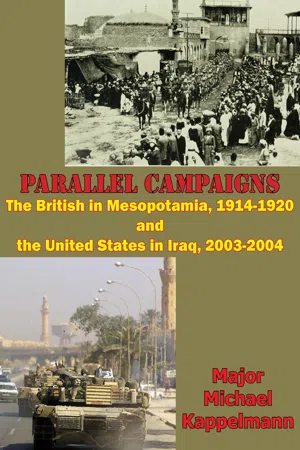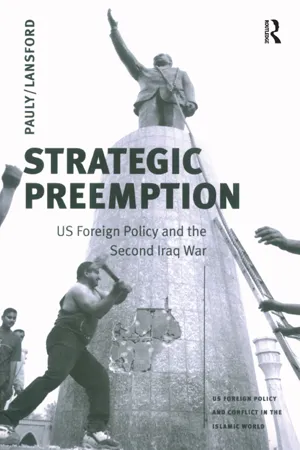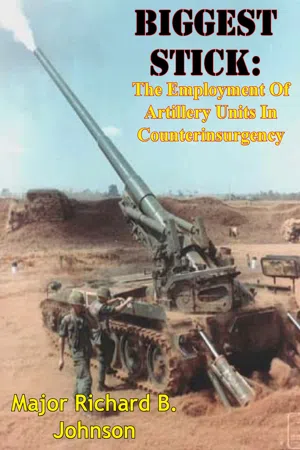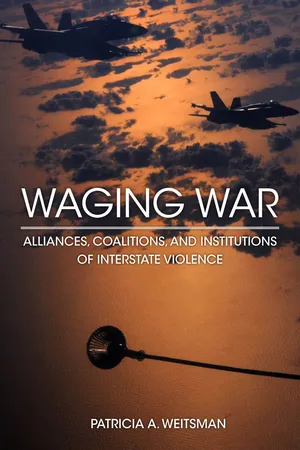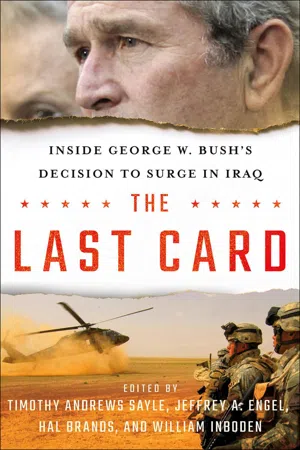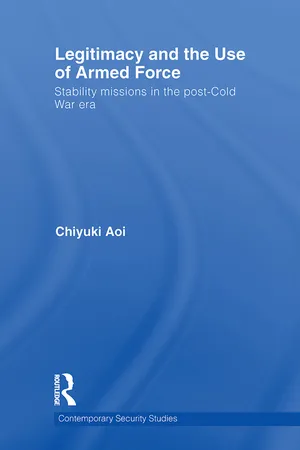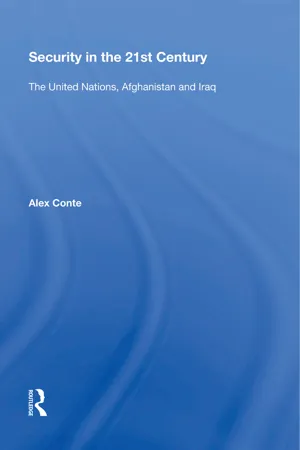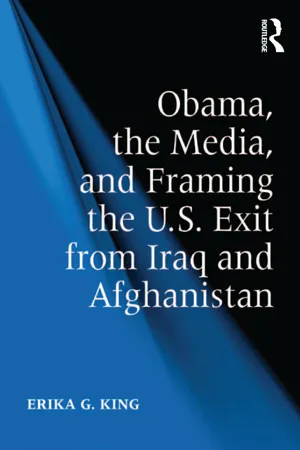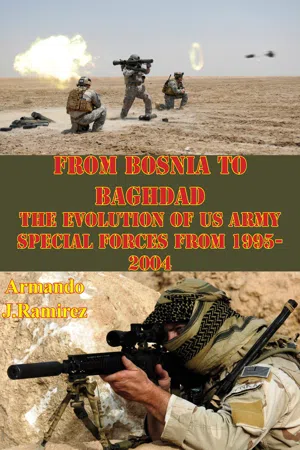History
Operation Iraqi Freedom
Operation Iraqi Freedom was a military campaign led by the United States and a coalition of allies to overthrow the regime of Saddam Hussein in Iraq. Launched in 2003, the operation aimed to eliminate weapons of mass destruction and promote democracy in the region. The conflict resulted in the eventual capture and execution of Saddam Hussein, but also led to a prolonged period of instability in Iraq.
Written by Perlego with AI-assistance
12 Key excerpts on "Operation Iraqi Freedom"
- eBook - ePub
- Major Michael Andrew Kappelmann(Author)
- 2014(Publication Date)
- Tannenberg Publishing(Publisher)
CHAPTER 4 — Operation Iraqi Freedom
In 2003, the U.S. led a coalition effort to invade Iraq and forcibly remove the Ba’athist totalitarian regime of Saddam Hussein. American political leadership envisioned this campaign as enabling its strategic goals in GWOT by establishing a functional representative government with the rule of law in the heart of the Middle East. The operational design however, was arguably incompatible with this strategy in the sense that the campaign, though remarkably successful in a military sense, undermined the conditions necessary to achieve the desired political end state. Further, optimistic assumptions at the strategic level about how the Iraqi people would react to foreign occupation and governance were not realistic.This chapter summarizes OIF from March 2003 to August 2004. The conventional phase of the campaign was complete in a matter of weeks, shattering the Iraqi armed forces and capturing physical objectives in a lightning manner. In the aftermath, the U.S. demonstrated that it had given little planning to post-war reconstruction and administration, and had allocated inadequate resources for doing so. An insurgency, mostly in the Sunni Arab regions, began and steadily grew over the following year. In April 2004, an uprising exploded among the Shi’a Arabs, leading to some of the deadliest days of the conflict for U.S. and coalition forcesStrategic Context
American political leadership envisioned OIF not as an end in its own right but as an enabling operation to the strategic ends of a world-spanning war. Following the al-Qaeda terrorist attacks of 11 September 2001, the U.S. adopted a national security strategy of pre-emptive engagement in order to target and eliminate threats from abroad before they can cause harm to the U.S. or its allies. Worldwide efforts against al-Qaeda, other terrorist organizations, and those states believed to sponsor them would fall under the moniker “Global War on Terrorism.”{161} - eBook - ePub
Strategic Preemption
US Foreign Policy and the Second Iraq War
- Robert J. Pauly(Author)
- 2017(Publication Date)
- Routledge(Publisher)
Chapter 5 Operation Iraqi Freedom IntroductionThe diplomatic battles which foreshadowed the US-led invasion, in many ways overshadowed the actual military phase of the campaign to oust the regime of Saddam Hussein. The US and coalition military build-up in the region was slow and deliberate. The slow pace of the diplomatic intercourse allowed the US and its allies to preposition troops, aircraft, ships and other military equipment. The only major hurdle faced in the deployment was the refusal of Turkey to allow the US to launch a northern front from its territory. This necessitated some last minute redeployments, but the main strategy and force arrangements were relatively unaffected by Turkey’s decision.Just as Bush allowed Powell considerable freedom of action in shaping US diplomacy during the prelude to the war, the President also allowed Rumsfeld and the Defense Department’s senior officers wide latitude to formulate and implement their preferred strategy. Freed from the perceived constraints of a multilateral military coalition, and its implicit political complications, US military planners sought to deploy the full range of American assets and capabilities in a campaign that would both showcase US firepower and minimize casualties. The administration sought a swift military victory as a means to entice other states to participate in the stabilization and nation building missions that would follow the assumed fall of the regime. In this fashion, Bush and his senior aides hoped that the conflict would follow the Afghan model in which US forces undertook the majority of combat missions, but coalition members provided the bulk of the peacekeeping and stabilization forces.Central to the military plans was the concept of rapid dominance (which came to be known as “shock and awe”). Rapid dominance involved the use of extensive firepower and advanced weaponry. Large amounts of precision-guided and advanced munitions would hit targets within minutes of each other or even simultaneously. It was meant to exert a tremendous psychological impact on the enemy and to demoralize and bewilder enemy troops into inaction or retreat or outright surrender. Rapid dominance was the logical extension of the Weinberger-Powell Doctrine and the legacy of Vietnam. The concept was designed to maximize the military and intelligence advantages of the United States and to ensure a quick and relatively painless victory. US forces could, therefore, prevent the grinding and bloody ground combat that the nation faced in Vietnam. The confidence of the Defense Department was such, that it decided to embed reporters with military units in order to provide firsthand accounts of operations so they could “live, work and travel as part of the units in which they are embedded in order to facilitate maximum, in-depth coverage of US forces in combat and related operations.”1 - Alastair Finlan(Author)
- 2014(Publication Date)
- Bloomsbury Academic(Publisher)
CHAPTER SIX Operation Iraqi FreedomS hock and awe is a concept that promotes the idea of rapid dominance over an enemy’s “system of systems” through use of precision bombing.Operation Iraqi Freedom (OIF) is one of the most unusual and controversial campaigns of the modern era. Ostensibly, it appears to be a remarkable military victory, but a closer analysis of the fighting and the aftermath paint quite a different picture. A small coalition made up primarily of American and British forces in the face of widespread international opposition invaded Iraq. This extraordinarily small force package managed in a matter of weeks to topple the regime of Saddam Hussein. Notwithstanding various claims that OIF represented a new way of warfare or vindicated Rumsfeld’s transformation thesis, it was, in reality, a very traditional campaign that reflected archetypal trends in the contemporary American way of waging war. It was heavily fixated at the operational ground level on attacking targets that were key features of the previous Gulf War I model, the Iraqi military forces, and, especially, the Republican Guard. Senior commanders in OIF placed a great emphasis on the joint nature of the campaign, but in theater, the three armed services of the United States reverted to type and largely fought their own individual battles with a heavy reliance on cultural preferences. The overall visions and predictions of US political and key military elites about the type of enemy and how the campaign should be fought proved to be found greatly wanting in the deserts of Iraq. As such, the direction of the operation and eventual success, in the same manner as Operation Enduring Freedom, rested heavily on ad hoc decisions made by senior commanders in the field against an enemy whose incompetence provided them with enormous latitude for error.The challenges of IraqThe strategic and operational challenges posed by OIF were immense and manifold. In terms of geography, Iraq is the size of Germany and Austria combined and from Kuwait, the main start line for the invasion forces, to the capital was a distance of several hundred miles. John Keegan eloquently illustrates the geography issue facing the invading forces and argues that “not only is Iraq a difficult country to invade from the south, because of the narrowness of the point of entry, it is also a difficult country to conquer, because of the distance from the point of entry to Baghdad, over 300 miles to the north.”1 Iraq also shared various borders with quite a mélange of neighbors; some of whom would be friendly to US forces, some neutral and others not. These included Kuwait, Saudi Arabia in the southwest, Jordan in the west, Syria in the northwest, Turkey in the north, and Iran in the east. An important issue that appeared to be overlooked by Central Command (CENTCOM) planners and the Office of the Secretary of Defense was that securing these borders would be vital to the security of the post-Saddam environment, but only large amounts of ground forces could achieve this vital state of affairs. With a population of 24 million2 divided roughly into three ethnic groups, the Shiites who represented the majority in the south, the Sunni, the minority and traditional rulers of Iraq in the west and located in the center, and the Kurds in their own semi-autonomous region in the north, the coalition also faced a very challenging population control dimension. Despite the neoconservative dogma3- eBook - ePub
Zero-Sum Victory
What We're Getting Wrong About War
- Christopher D. Kolenda(Author)
- 2021(Publication Date)
- The University Press of Kentucky(Publisher)
ART VPursuit of Decisive Victory in Iraq
Overview
Since Iraq invaded Kuwait in 1990, the United States was so suspicious of Saddam Hussein that regime change in Iraq eventually became official US policy with the Iraq Liberation Act of 1998. In the aftermath of the 9/11 attacks and after years of unsuccessful negotiations with Saddam Hussein over Iraq’s suspected weapons of mass destruction (WMD) program, the United States ended talks and, on March 20, launched Operation Iraqi Freedom.1 The Hussein regime fell on April 9, and the United States established a transitional government called the Coalition Provisional Authority (CPA).Failing to prepare adequately for the occupation, the US military and civilian authorities faced an increasingly chaotic situation as the Iraqi military collapse turned into an insurgency.2 Policies such as de-Ba’athification (which removed and banned members of Hussein’s Ba’ath Party from the public sector) and disbanding the Iraqi Army, combined with heavy-handed military operations in the Sunni Triangle, stoked Sunni Arab fears of marginalization and repression by dominant Shi’a parties.3 Senior Iraqi leaders often manipulated unwitting American forces to advance personal and sectarian agendas.4 Sunni-Shi’a violence spiraled with the February 2006 bombing of the Shi’a mosque in Samarra.5 Senior US officials focused on drawing down the US presence and handing over security responsibilities to the fledgling and sectarian Iraqi security forces.6 They rebuffed recommendations by junior American officials to reach out to Sunni leaders.7This intervention was to replace an existing regime with one more amicable to US interests. Failure to adequately consider war termination resulted in a strategy that fixated on the use of military force, wished away post-Saddam risks, and underappreciated the requirements for a favorable and durable outcome. The critical factors model outlined in chapter 2 - Major Richard B. Johnson(Author)
- 2015(Publication Date)
- Tannenberg Publishing(Publisher)
CHAPTER 5 — Operation Iraqi Freedom
Do not try to do too much with your own hands. Better the Arabs do it tolerably than that you do it perfectly. It is their war, and you are to help them, not to win it for them. Actually, also, under the very odd conditions of Arabia, your practical work will not be as good as, perhaps, you think it is.— T. E. LawrenceSimilar to the American experience in Vietnam, the counterinsurgency effort during Operation Iraqi Freedom (OIF) was not a diametrically opposed insurgency-counterinsurgency dynamic; it was also an amalgam of several forms of warfare. Insurgency, communal conflict, and terrorism all emerged in Iraq.{586} The history of OIF reinforces the notion that while war among the people has a chiefly political element, it is still warfare.{587} Insurgency took the dual forms of a rebellion of disaffected groups after the collapse of an authoritarian government, and a rebellion against an intervening authority. Communal conflict took the form of sectarian and ethnic warfare. Terrorism took the form of activities that sought to further transnational extremist goals{588} . One of the greatest challenges facing the American-led counterinsurgency effort in Iraq was that attacking one of these problem sets indirectly affected the other two problem sets.Through an adaptation of tactics and an evolution of strategy that pragmatically secured the Iraqi population and defeated the drivers of instability, it is fair to assert “that we and the Iraqis together pulled their society back from the brink of total collapse.”{589}- eBook - ePub
Waging War
Alliances, Coalitions, and Institutions of Interstate Violence
- Patricia A. Weitsman(Author)
- 2013(Publication Date)
- Stanford Security Studies(Publisher)
49 In January 2010, the coalition was renamed U.S. Forces in Iraq; in September 2010, Operation Iraqi Freedom was renamed Operation New Dawn. It became a singularly U.S. operation designed to address Iraq’s political and economic transition through continuing work targeting terrorist networks, but it focused principally on strengthening Iraqi political, military, and economic capacities and stability. In December 2011, the United States formally ended its military operations in Iraq.In summary, the balance of power in regard to capabilities was asymmetrical in that the United States was by far the most powerful country in the coalition. The Iraq war was a U.S.-initiated operation, and thus it is not surprising that the United States shouldered the largest share of its cost. Within the coalition, however, small states contributing very little to the coalition in terms of troops yielded significant benefits, emblematic of their disproportionate leverage within the coalition. The war in Iraq highlights the ways in which multilateral warfare advances strategic ends, yet in so doing states incur inevitable costs. As is often the case, challenges in burden sharing impinged on cohesion and fighting effectiveness.Table 6.2 Troop contingents in Iraq by country of origin, March 2004SOURCE: Perspectives on World History and Current Events. Accessed 5/16/2012. http://pwhce.org/willing.html .Table 6.3 Coalition members, March 27, 2003–August 31, 2010SOURCE: “U.S.-Iraq War.” ProCon.org . Accessed 5/15/2012. http://usiraq.procon.org/view.resource.php?resourceID=000677 ; for December 2003–2007: U.S. Government Accountability Office. “Stabilizing and Rebuilding Iraq: Coalition Support and International Donor Commitments.” May 9, 2007; for 2008–10: U.S. Department of Defense. “Measuring Stability and Security in Iraq.” June 2009; Multi-National Force-Iraq and United States Forces-Iraq websites (various pages); Rod Nordland and Timothy Williams. “Iraq Force Soon to Be a Coalition of One.” New York Times - eBook - ePub
The Last Card
Inside George W. Bush's Decision to Surge in Iraq
- Timothy Andrews Sayle, Jeffrey A. Engel, Hal Brands, William Inboden, Timothy Andrews Sayle, Jeffrey A. Engel, Hal Brands, William Inboden(Authors)
- 2019(Publication Date)
- Cornell University Press(Publisher)
This book thus offers a new account of presidential and administration decision making in the run-up to a momentous change in America’s war in Iraq. To be clear, this book is not a history of the subsequent implementation of the surge by US military forces and civilian personnel in Iraq. Neither is it designed to assess the outcome of the surge or adjudicate the wisdom and necessity of the Iraq War itself. Those questions will no doubt be exhaustively assessed by future historians. Moreover, given the complexity of the implementation of the surge and the debates surrounding it, the Obama administration’s later decisions regarding troop deployments in Iraq, and the rise of the Islamic State, among other ongoing regional quandaries, including the ensuing Syrian civil war, any rigorous assessment of the surge’s effects will require additional volumes. But we cannot begin to grapple with the history of the surge without understanding how it came to be in the first place. Telling that story is the purpose of this book, and this project.The history of the surge must begin with another presidential address to the nation. A little after 10 p.m. Eastern time on March 19, 2003, George W. Bush announced that “American and coalition forces are in the early stages of military operations to disarm Iraq, to free its people and to defend the world from grave danger.” The Iraq War had begun.Although Bush warned the country that military operations in Iraq could “be longer and more difficult than some predict,” it certainly did not appear that way in the spring of 2003. The American invasion of Iraq was a military marvel. Although planners had hoped for a two-front attack against Saddam’s forces, Turkey’s refusal to serve as a launching pad for the US assault caused a last-minute change of plans for Operation Iraqi Freedom (OIF). Nonetheless, the relatively small invasion force—fewer than 150,000 American troops supported by 20,000 British and coalition troops—a small fraction of the number of forces the US and its allies had used to evict the Iraqi military from Kuwait in Operation Desert Storm in 1991—raced toward Baghdad.6 The invasion force, purposely limited in size to preserve agility and strategic surprise, routed or bypassed Iraqi forces and quickly shattered Saddam’s regime. Early premonitions of severe fighting in Iraq’s urban centers, and of thousands of Iraqi and coalition casualties, turned out to be overstated—for the time being.On May 1, President Bush flew to the aircraft carrier USS Abraham Lincoln and declared an end to major combat operations. With this phase of OIF complete, American planners looked forward to a rapid drawdown that might see as few as twenty-five thousand US troops left in Iraq by the fall of 2003.7 But preinvasion plans had overestimated the level of stability that would follow Saddam’s defeat. As one history of OIF, drafted by the Center for Army Lessons Learned, put it, “the great challenge of OIF” would prove to be not the campaign to topple Saddam, but the “struggle to create a new Iraq in place of the Saddam regime.”8 - eBook - ePub
Aviation & Air Power
A History of Multinational Air Operations
- Steven Paget, Steven Paget(Authors)
- 2021(Publication Date)
- The University Press of Kentucky(Publisher)
Operation Iraqi Freedom The Allied Contribution Benjamin S. LambethAs in the first Persian Gulf War in 1991, Washington’s main partner in Operation Iraqi Freedom (OIF) was the United Kingdom.1 By every measure that matters, especially given its small size and limited resources, the United Kingdom was a coequal player with the United States when it came to the quality of its equipment, military leadership, concepts of operations, and combat prowess. Such close involvement was hardly surprising; the United States and Great Britain have had a long-standing special relationship dating back to the early twentieth century. The United Kingdom had been a close partner of the United States in a succession of subsequent United Nations (UN)–approved military contingency responses, including Operation Deliberate Force and Operation Allied Force over the Balkans during the 1990s and the decade-long enforcement of the UN-mandated no-fly zones over post–Operation Desert Storm Iraq through Operations Northern Watch and Southern Watch (the British portions of which were code-named Operation Resinate), the UN effort to enforce the no-fly zones over Iraq.In addition, the Royal Air Force (RAF) had routinely trained with the US Air Force (USAF) in realistic large-force exercises such as Red Flag at Nellis Air Force Base (AFB), Nevada, and similar training evolutions elsewhere around the world. Perhaps most important of all, ever since the terrorist attacks of 11 September 2001, the British Ministry of Defence (MoD) had maintained an embedded senior leadership and staff presence at US Central Command (CENTCOM) headquarters at MacDill AFB, Florida, in connection with Operation Enduring Freedom (OEF), to which the RAF contributed notably in the support role by providing VC-10 and Tristar tankers, E-3D Sentry Airborne Warning and Control System (AWACS) and Canberra PR9 reconnaissance aircraft, and intratheater airlifters as well as by basing provisions at the British Indian Ocean island Diego Garcia that were crucial for supporting US bomber operations.2 - eBook - ePub
- Chiyuki Aoi(Author)
- 2010(Publication Date)
- Routledge(Publisher)
3Operation Iraqi Freedom was launched on 20 March 2003, and the US and the coalition forces quickly advanced to the capital. On 9 April, the US forces advanced to the center of Bagdad. On 1 May 2003, President Bush declared the end of the “major combat operations.”4After a swift defeat of the Saddam regime, an ill-organized stabilization phase followed. The Bush administration had organized, in January 2003, the Department of Defense (DoD)-led inter-agency Office of Reconstruction and Humanitarian Assistance (ORHA) to plan for postwar reconstruction,5 and retired Lt. General Jay M. Garner, U.S. Army, was appointed coordinator. ORHA, however, was given only two months to plan for the reconstruction, and was allowed to deploy much later than the combat forces, with Garner entering Baghdad only on 21 April.6In May 2003, no sooner had it been deployed, however, than ORHA was replaced by the Coalition Provisional Authority (CPA) led by Ambassador L. Paul Bremer III.7 The CPA was mandated “to restore conditions of security and stability, to create conditions in which the Iraqi people can freely determine their own political future, … and facilitate economic recovery, sustainable reconstruction and development.”8 On 22 May 2003, the UN Security Council recognized the “Authority,” by passing resolution 1483 (2003) under UN Charter Chapter VII, and ended the economic sanctions that had been imposed on Iraq since 1990.9 - eBook - ePub
Security in the 21st Century
The United Nations, Afghanistan and Iraq
- Alex Conte(Author)
- 2017(Publication Date)
- Routledge(Publisher)
Operation Iraqi FreedomIntroduction
The intervention in Iraq in 2003 has been a matter of considerable controversy, both prior to the commencement of operations and since the intervention in light of the failure of coalition forces to find weapons of mass destruction within the Iraqi territory, and allegations of faulty intelligence and misleading public statements by State officials. Many issues arise out of the war, including the basis upon which States may use force against one another; the effectiveness of the various international instruments governing the non-proliferation and disarmament of weapons of mass destruction; the conduct of military operations in the field; the role of the United Nations and others in post-war reconstruction; the accuracy or otherwise of military intelligence used by leaders to justify action against Iraq; and the role and relevance of international law in modern politics. All are important. All have an impact on the maintenance of international peace and security. The focus of this chapter, however, is a limited one and considers an important aspect of the overall theme of this text: the role of the Security Council in maintaining international peace and the exclusivity of that role.1Of the various key issues arising from the 2003 intervention in Iraq, the basis upon which States may use force against one another has attracted significant attention. Various arguments might be employed in an attempt to validate the action against Iraq, It might be argued, for example, that intervention was permissible as an act of anticipatory self-defence, in the face of intelligence suggesting that Iraq was in a position to launch weapons of mass destruction at 45 minutes notice. This would have to be tempered against the subsequent finding by the United Kingdom Parliamentary Foreign Affairs Committee on 7 July 2003 that a dossier on Iraq's weapons, relied upon by Prime Minister Blair in his address to Parliament on 18 March 2003, was incorrect. The contention would also need to reflect upon the legal arguments that neither the United Nations Charter, nor customary international law, permit anticipatory self-defence.2 A more controversial position might also have been posited: that action was permissible by way of humanitarian intervention, due to the dreadful human rights record of the Saddam regime.3 - Erika G. King(Author)
- 2016(Publication Date)
- Routledge(Publisher)
4 Turning the Page on Operation Iraqi Freedom DOI: 10.4324/9781315598635-5In a July 2008 New York Times op-ed piece titled “My Plan for Iraq,” presumptive Democratic presidential nominee Barack Obama recapitulated almost six years of withering criticism of the Iraq War. Declaring that “Iraq is not the central front in the war on terrorism, and it never has been,” he characterized the conflict as a “grave mistake” and “the greatest strategic blunder in the recent history of American foreign policy.” He thus pledged that on his first day in office he would “give the military a new mission: ending this war” and initiate a phased redeployment of U.S. combat troops. Obama emphasized that the drawdown would be undertaken thoughtfully and deliberately; as he memorably phrased it, “We must be as careful getting out of Iraq as we were careless getting in” (Obama 2008b ).Opposition to Iraq had been a constant rallying cry for Obama since the fall of 2002, when as a little-known Illinois state senator he had first characterized the proposed incursion against Saddam Hussein as “a dumb war … a rash war,” based “not on reason but on passion, not on principle but on politics” (Obama 2002 ). Upon assuming his U.S. Senate seat in 2005, Obama continued to condemn the war, but while his words remained highly critical his attention quickly turned to a more pragmatic issue: how best to overcome the harsh realities the U.S. now faced in the conflict. In every public statement on Iraq, the senator would roundly castigate the Bush administration for a litany of failures from the faulty intelligence used to make the case for war to the extraordinary mismanagement of the war itself. But his primary concern was focusing the national debate on the best outcome for a war in which there unfortunately were “no magic bullets” (Obama 2005- Armando J. Ramirez(Author)
- 2014(Publication Date)
- Tannenberg Publishing(Publisher)
IV. — OPERATIONS ENDURING FREEDOM AND IRAQI FREEDOM “Within about two months of the start of combat operations, several hundred CIA operatives and Special Forces soldiers, backed by the striking power of US aircraft and a much larger infrastructure of intelligence and support efforts had combined with Afghan militias and a small number of other coalition soldiers to destroy the Taliban regime and disrupt al-Qaeda. They had killed or captured about a quarter of the enemy’s known leaders.” {50} This chapter examines the role of Special Forces in Operation Enduring Freedom (OEF) and Operation Iraqi Freedom (OIF), answering the research question: What types of operations did Special Forces conduct in OEF and OIF. Investigation of Special Forces employment in OEF and OIF will assist the overall analysis of the chronological evolution of Special Forces operations from the mid-1990s to present day. A. — OPERATION ENDURING FREEDOM 1. — Setting the Stage Following the terrorist attacks of September 11, 2001, as the US Central Command (CENTCOM) staff analyzed the feasibility of attacking Afghanistan, they recognized two critical shortcomings. No plan existed to fight a conventional war in Afghanistan, nor did the US maintain basing arrangements with any neighboring countries from which ground forces could rapidly enter Afghanistan. {51} Faced with the mission of annihilating the al-Qaeda terrorist group and removing the ruling Taliban regime from power, Afghanistan posed unique challenges to military planners. Geographically constrained by the landlocked, mountainous topography, US forces would either have to fly or move overland into Afghanistan. Complicating matters further, no modern infrastructure existed within the country, conditions being primitive
Index pages curate the most relevant extracts from our library of academic textbooks. They’ve been created using an in-house natural language model (NLM), each adding context and meaning to key research topics.
Explore more topic indexes
Explore more topic indexes
1 of 6
Explore more topic indexes
1 of 4
